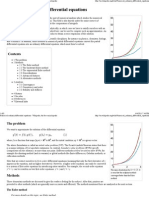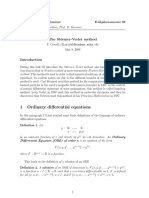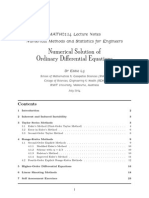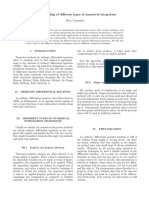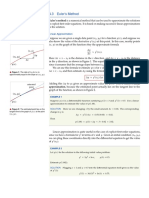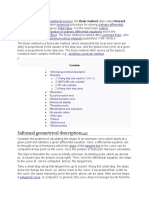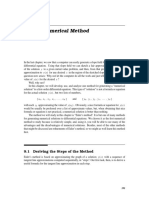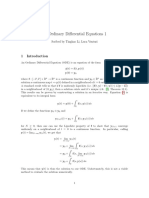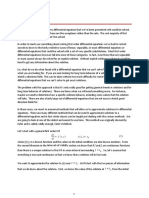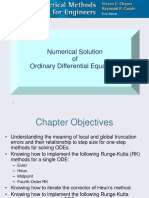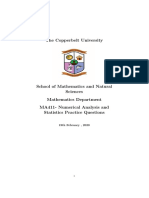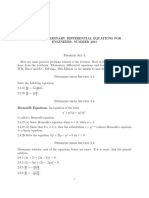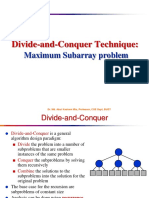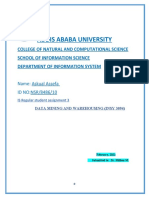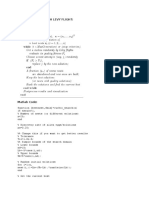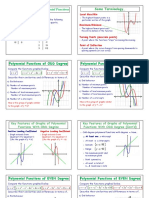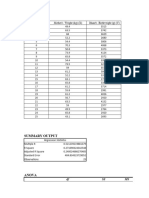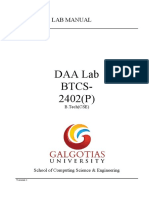0% found this document useful (0 votes)
8 views65 pagesLecture 9
The document provides an overview of numerical methods for solving ordinary differential equations (ODEs), including Euler's method and Runge-Kutta methods. It discusses the classification of differential equations, error analysis, and stability considerations. Additionally, it includes examples and applications of these methods in MATLAB.
Uploaded by
hoangbv.23ba14118Copyright
© © All Rights Reserved
We take content rights seriously. If you suspect this is your content, claim it here.
Available Formats
Download as PDF, TXT or read online on Scribd
0% found this document useful (0 votes)
8 views65 pagesLecture 9
The document provides an overview of numerical methods for solving ordinary differential equations (ODEs), including Euler's method and Runge-Kutta methods. It discusses the classification of differential equations, error analysis, and stability considerations. Additionally, it includes examples and applications of these methods in MATLAB.
Uploaded by
hoangbv.23ba14118Copyright
© © All Rights Reserved
We take content rights seriously. If you suspect this is your content, claim it here.
Available Formats
Download as PDF, TXT or read online on Scribd
/ 65
